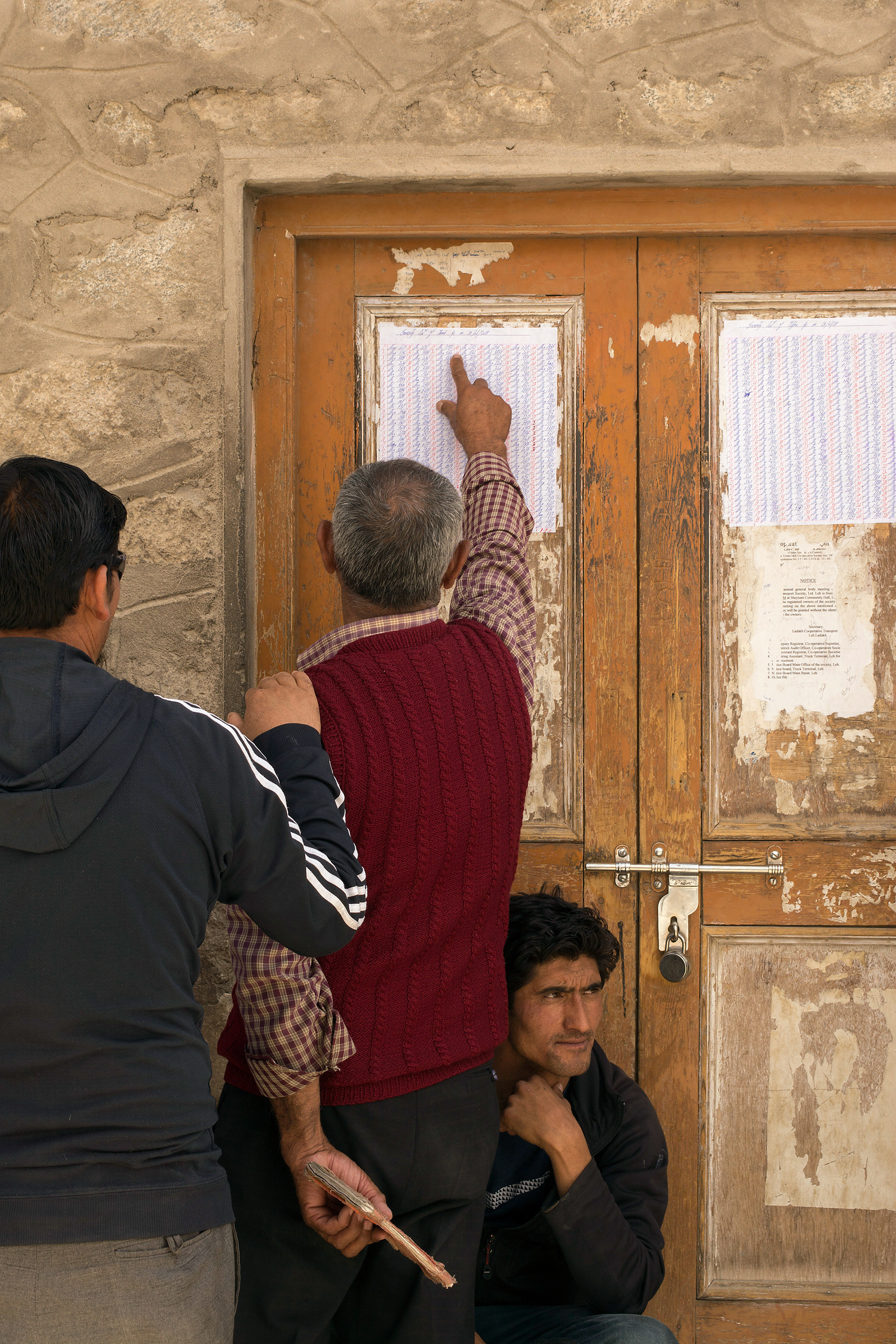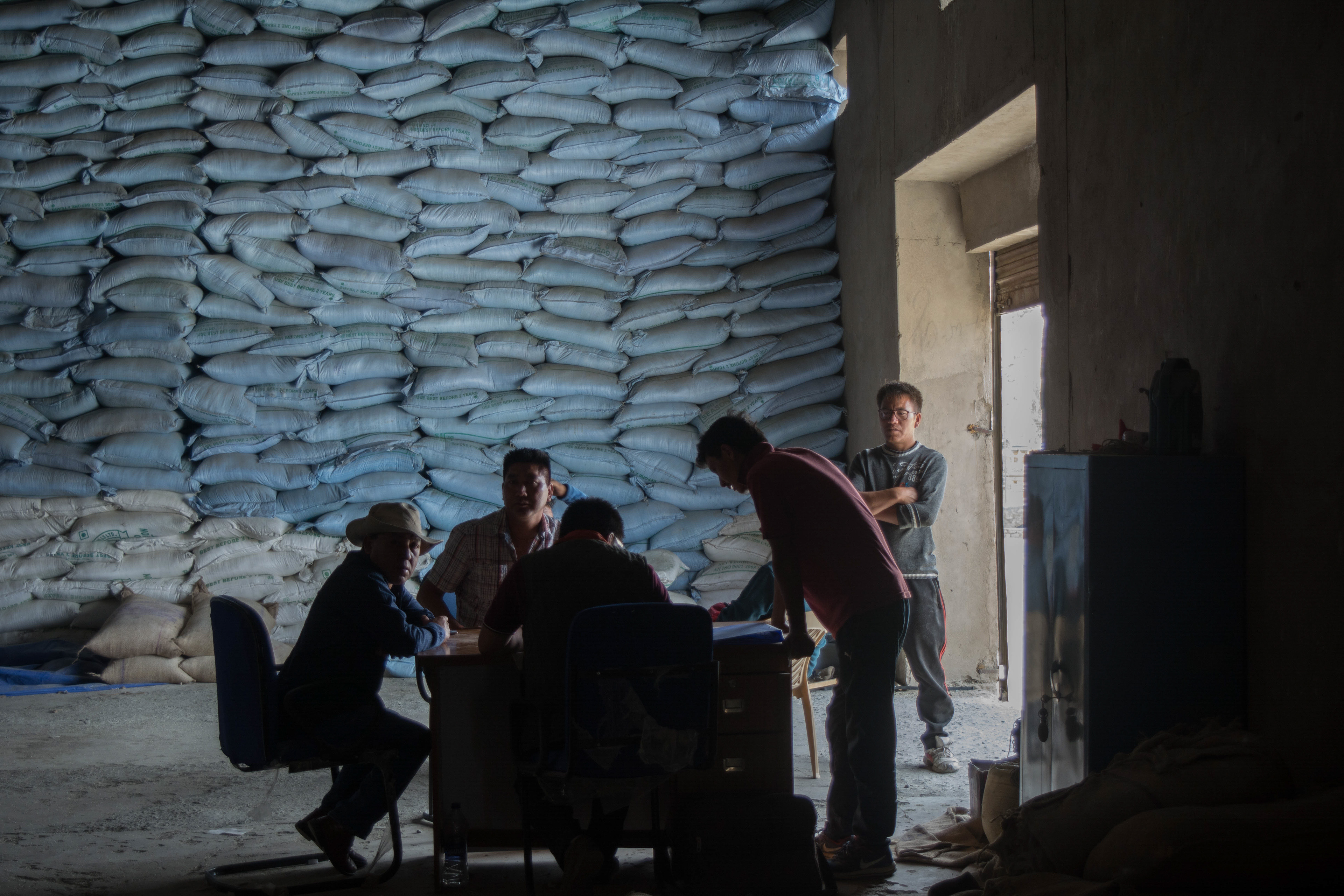Modern Ladakh has been moulded by many factors, one of the main being the presence of the army, and the other, opening out the land to outsiders in 1974. Construction work on roadways extended it further to the rest of the world. Ladakh slowly soaked in influxes that began to amalgamate into what it is today, a land that grows and diminishes simultaneously. Noticeably, the largest business on which Leh sustains itself is tourism. Another economic activity of the people of the city is transportation. The truck union that stands as the second largest income generator for the city, is chiefly hired to serve the army and the FCI (Food Corporation of India) to supply food to remote villages and army cantonments. Traversing the formidable terrains of Ladakh is a way of life for the workers of the truck union. In the transformation of contemporary Ladakh, the truckers of Leh have a unique role to play across the various challenges presented by nature and the politics of the land.
The union distributes contracts on a slotturn based system, hiring and paying the truckers by the number of trips made. The contracts sizeably reduced after the army increased it’s own vehicle- transportation services since 2011.

Agling Road, Leh Truckers, both owners and drivers assemble at the union office to wait for slot announcements.

Grains getting loaded at FCI godowns

Workers wait to load and unload the Trucks
Tukstan at the beginning of a long trip to Nubra. A five-hour journey from Leh, that crosses Khardung La, one of the highest passes of the world with difficult terrain and frequent landslides.